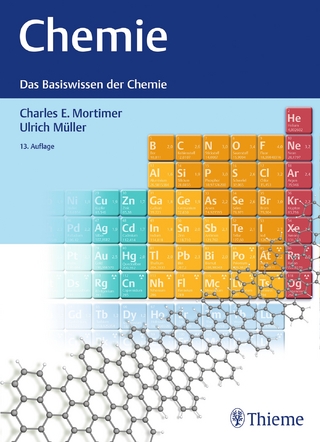
Monitoring Polymerization Reactions
John Wiley & Sons Inc (Verlag)
978-0-470-91738-1 (ISBN)
- Lieferbar (Termin unbekannt)
- Versandkostenfrei innerhalb Deutschlands
- Auch auf Rechnung
- Verfügbarkeit in der Filiale vor Ort prüfen
- Artikel merken
Offers new strategies to optimize polymer reactions
With contributions from leading macromolecular scientists and engineers, this book provides a practical guide to polymerization monitoring. It enables laboratory researchers to optimize polymer reactions by providing them with a better understanding of the underlying reaction kinetics and mechanisms. Moreover, it opens the door to improved industrial-scale reactions, including enhanced product quality and reduced harmful emissions.
Monitoring Polymerization Reactions begins with a review of the basic elements of polymer reactions and their kinetics, including an overview of stimuli-responsive polymers. Next, it explains why certain polymer and reaction characteristics need to be monitored. The book then explores a variety of practical topics, including:
Principles and applications of important polymer characterization tools, such as light scattering, gel permeation chromatography, calorimetry, rheology, and spectroscopy
Automatic continuous online monitoring of polymerization (ACOMP) reactions, a flexible platform that enables characterization tools to be employed simultaneously during reactions in order to obtain a complete record of multiple reaction features
Modeling of polymerization reactions and numerical approaches
Applications that optimize the manufacture of industrially important polymers
Throughout the book, the authors provide step-by-step strategies for implementation. In addition, ample use of case studies helps readers understand the benefits of various monitoring strategies and approaches, enabling them to choose the best one to match their needs.
As new stimuli-responsive and "intelligent" polymers continue to be developed, the ability to monitor reactions will become increasingly important. With this book as their guide, polymer scientists and engineers can take full advantage of the latest monitoring strategies to optimize reactions in both the lab and the manufacturing plant.
WAYNE F. REED is Professor of Physics and Founding Director of the Tulane Center for Polymer Reaction Monitoring and Characterization. Dr. Reed has authored more than 100 scientific articles and holds several patents in the area of polymer reaction monitoring and characterization. ALINA M. ALB is Research Assistant Professor of Physics and Associate Director for Research at the Tulane Center for Polymer Reaction Monitoring and Characterization. Dr. Alb, author of numerous scientific articles and co-inventor of new instrumentation, has developed original methods to follow online synthesis of novel materials.
Preface ix
Introduction xi
Contributors xiii
SECTION I O VERVIEW OF POLYMERIZAT ION REACTIONS AND KINETICS_1
1 Free Radical and Condensation Polymerizations 3
Matthew Kade and Matthew Tirrell
2 Overview of Controlled/Living Polymerization Methods of Vinyl Monomers 29
Robert T. Mathers, Andrew J. D. Magenau, Kristin Schröder, and Krzysztof Matyjaszewski
3 Stimuli-Responsive Polymers via Controlled Radical Polymerization 45
Joel D. Flores, Brooks A. Abel, DeeDee Smith, and Charles L. McCormick
4 Reactions in Heterogeneous Media: Emulsion, Miniemulsion, Microemulsion, Suspension, and Dispersion Polymerization 59
Radmila Tomovska, José C. de la Cal, and José M. Asua
SECTION 2 Polym erization Characterization and Monitoring Methods 79
5 Polymer Characteristics 81
Wayne F. Reed
6 Infrared (MIR, NIR), Raman, and Other Spectroscopic Methods 107
Alexandre F. Santos, Fabricio M. Silva, Marcelo K. Lenzi, and José C. Pinto
7 Calorimetry, Conductivity, Densimetry, and Rheological Measurements 135
Jose R. Leiza and Timothy McKenna
8 Light Scattering 151
Guy C. Berry
9 G PC/SEC as a Key Tool for Assessment of Polymer Quality and Determination of Macromolecular Properties 171
Daniela Held and Peter Kilz
10 Mass Spectroscopy: ESR and NMR Applications to Polymer Characterization and Polymerization Monitoring 201
Zifu Zhu and Alina M. Alb
SECTION 3 A utomatic Continuous Online Monitoring of Polymerization Reactions (ACOMP) 229
11 Background and Principles of Automatic Continuous Online Monitoring of Polymerization Reactions (ACOMP) 231
Wayne F. Reed
12 Applications of ACOMP (I) 247
Alina M. Alb
13 Applications of ACOMP (II) 271
Wayne F. Reed
14 Cognate Techniques to ACOMP 295
Michael F. Drenski, Alina M. Alb, and Wayne F. Reed
15 Outlook for Industrial ACOMP 313
Michael F. Drenski and Alex W. Reed
SECTION 4 Reactor Control and Design: Batch, Semi-batch, and Continuous Reactors 325
16 Mathematical Modeling of Polymerization Reactors 327
F. Joseph Schork
17 Design and Operation of Polymerization Reactors 345
F. Joseph Schork
18 Optimization of the Particle Size in Emulsion Polymerization 363
Joseph Zeaiter and José A. Romagnoli
SECTION 5 Industrial Applications 381
19 Water-Soluble Free Radical Addition Polymerizations 383
Wesley L. Whipple and Hua Zheng
20 Protein Aggregation in Pharmaceutical Biotechnology 395
Mark L. Brader
21 Rubbers and Elastomers 409
Jorge Soto
22 Polymers from Natural Products 427
Dimitrios Samios, Aline Nicolau, and Miriam B. Roza
Index 451
| Erscheint lt. Verlag | 21.2.2014 |
|---|---|
| Verlagsort | New York |
| Sprache | englisch |
| Maße | 218 x 282 mm |
| Gewicht | 1315 g |
| Themenwelt | Naturwissenschaften ► Chemie ► Organische Chemie |
| Naturwissenschaften ► Physik / Astronomie | |
| Technik ► Maschinenbau | |
| ISBN-10 | 0-470-91738-5 / 0470917385 |
| ISBN-13 | 978-0-470-91738-1 / 9780470917381 |
| Zustand | Neuware |
| Haben Sie eine Frage zum Produkt? |
aus dem Bereich


